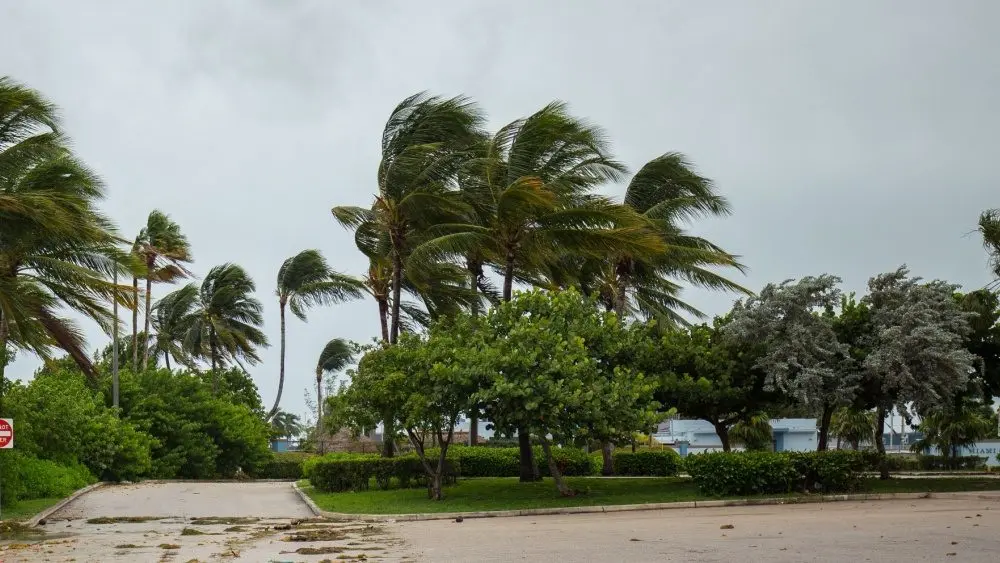
Hurricane Melissa intensified into a Category 5 hurricane as it neared Jamaica with maximum sustained winds near 175 mph, and the storm is expected to have ‘catastrophic impact’ on the country with up to 40 inches of rain, 13 feet of storm surge and 160 mph sustained winds — with landfall expected sometime Tuesday morning. Forecasters warned the storm could dump up to 30 inches of rain and produce a life-threatening storm surge along Jamaica’s southern coast. The storm is also expected to hit Cuba and bring severe weather to other parts of the Caribbean, including the Bahamas and Turks and Caicos.
Category 5 is the most extreme classification on the Saffir-Simpson scale, reserved for storms with sustained winds above 157 mph—powerful enough to level homes and infrastructure. Melissa more than doubled in strength over the weekend, increasing its winds by 70 mph in just 24 hours. The outer bands of the storm have already lashing Jamaica with wind and rain, and the National Hurricane Center warned that Melissa can potentially cause “extensive infrastructure damage” that will cut off communities.
Daryl Vaz, Jamaica’s transport minister, warned that Melissa could be the island’s most powerful hurricane in decades, with cleanup efforts likely hindered by flooding, landslides, and impassable roads. “Don’t make foolish decisions. We are in a very, very serious time over the next few days.”
Mandatory evacuation orders have been issued for vulnerable coastal areas of Jamaica ahead of what will likely be the strongest storm on record to hit the country. Melissa is expected to be the strongest storm to hit Jamaica since Hurricane Gilbert in 1988 and has already killed three people in Haiti and one person in the Dominican Republic.
Western Haiti could receive up to 16 inches of rain, bringing a severe risk of flash floods and landslides, the hurricane center said. The storm has already killed at least three people in Haiti and one in the Dominican Republic, where another person remains missing.
Desmond McKenzie, deputy chairman of Jamaica’s Disaster Risk Management Council, said in a statement: “I want to urge Jamaicans to take this seriously. Do not gamble with Melissa. It’s not a safe bet.”
Forecasters said the storm surge along Jamaica’s southern coast could reach 13 feet above ground level near and east of where Melissa makes landfall. Across Kingston and other areas, residents filled sandbags and cleared drains as crews prepared flood channels.
Melissa was also expected to make another landfall Tuesday in eastern Cuba. Hurricane warnings were issued for Granma, Santiago de Cuba, Guantánamo, and Holguín provinces, with up to 20 inches of rain and dangerous coastal flooding anticipated. About 1,000 U.S. military personnel were evacuated from Guantanamo Bay, Cuba and Navy ships in the area were moved out of the storm’s path, a U.S. defense official told CBS News.
In the Dominican Republic, heavy rainfall damaged more than 750 homes and displaced over 3,700 people, officials said. Schools and government offices in several provinces under red alert remained closed Monday, and flooding cut access to at least 48 communities.
In Haiti, the storm destroyed crops across multiple regions, including 37 acres of maize, worsening an already dire food crisis. More than 5.7 million Haitians face crisis-level hunger, with 1.9 million at emergency levels, according to the U.N. Food and Agriculture Organization. Forecasters warned Melissa would continue to unleash torrential rain over southern Haiti and the southern Dominican Republic in the coming days, heightening the risk of additional flooding and damage.
Editorial credit: Mia2you / Shutterstock.com
